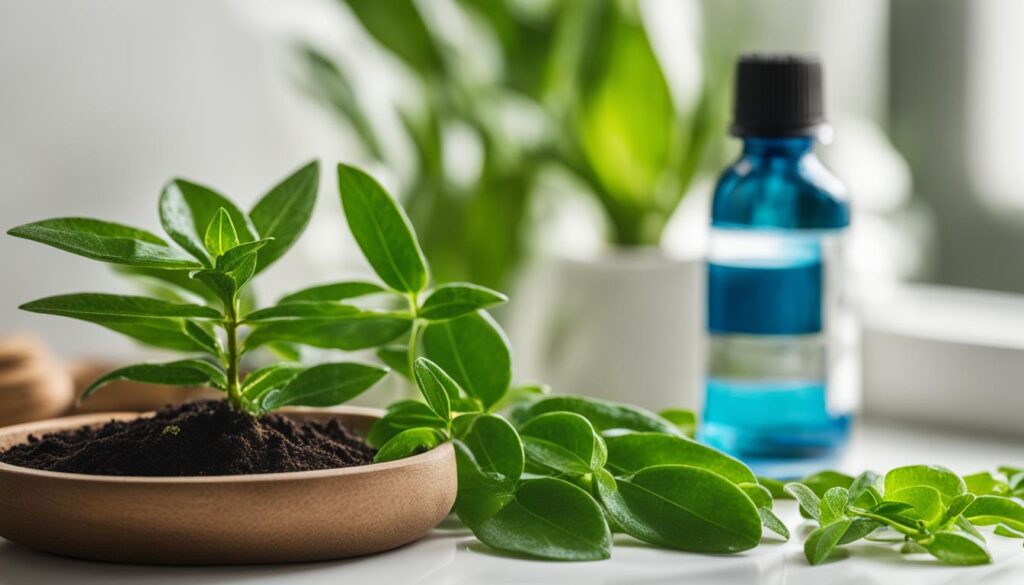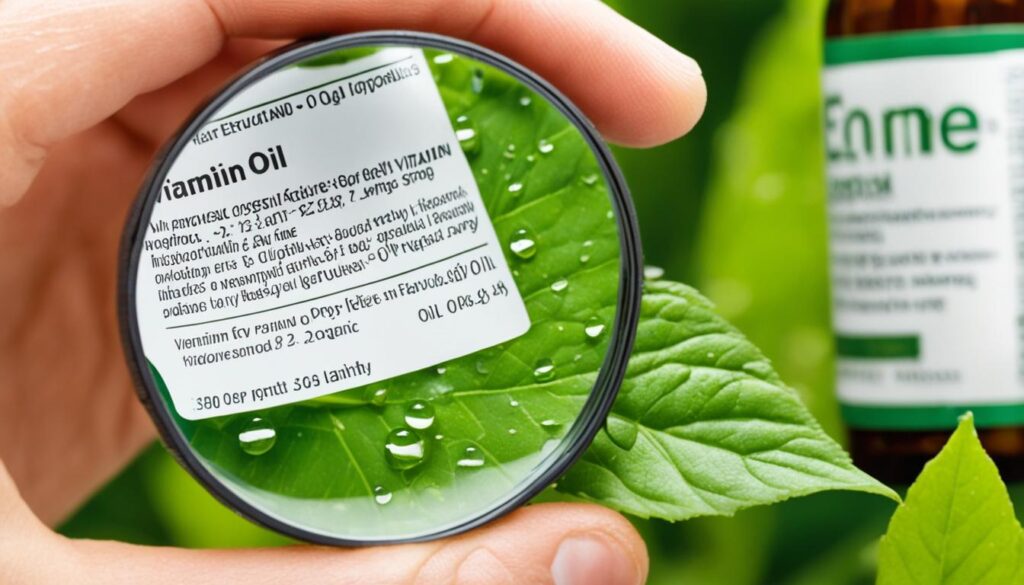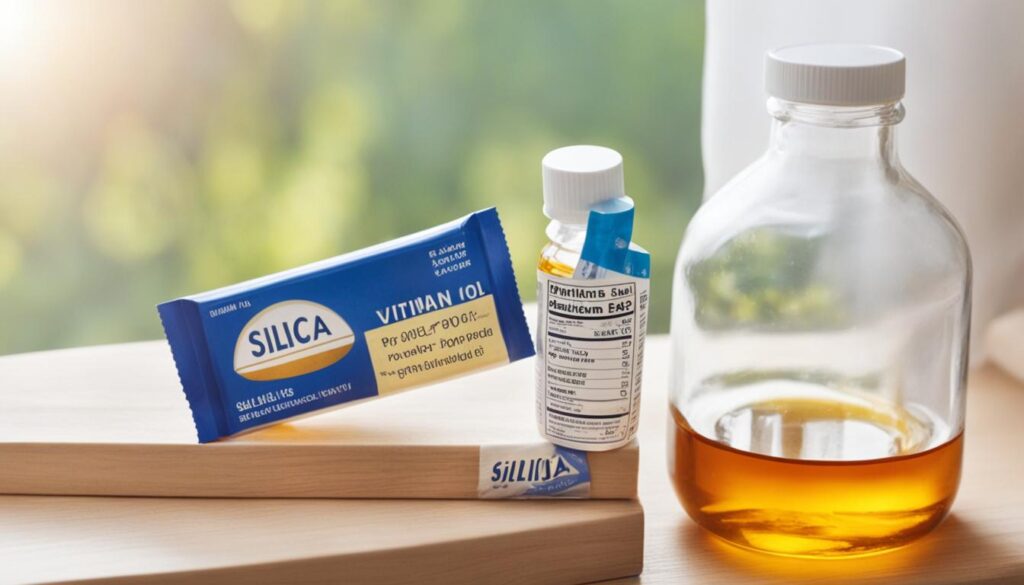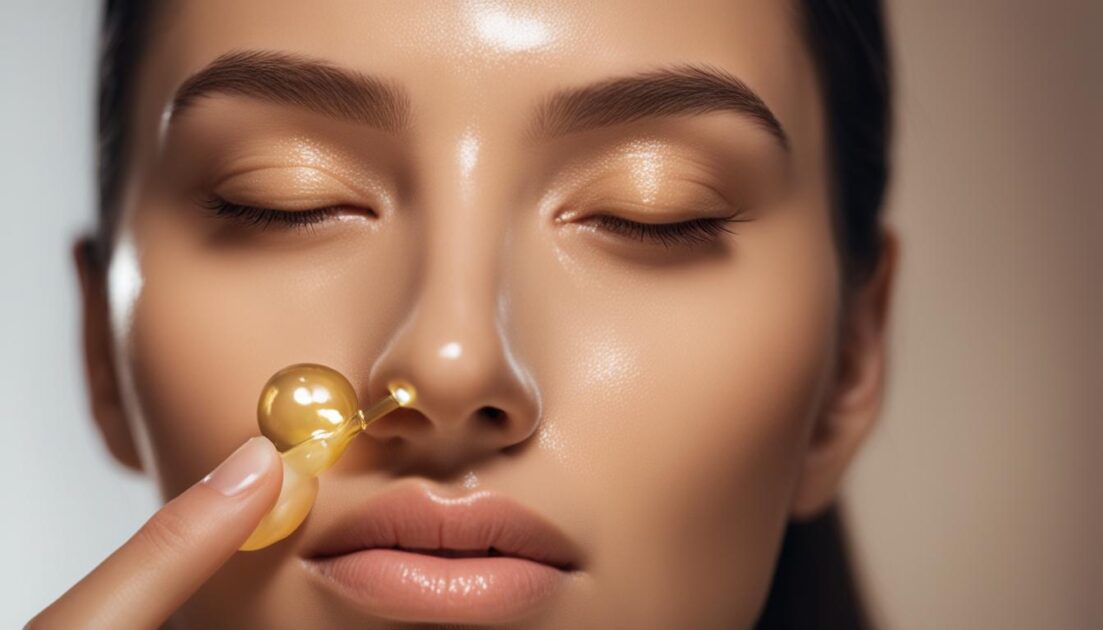When it comes to skincare and haircare, natural ingredients are often the best choice. One such ingredient that has gained popularity in recent years is vitamin E oil. Derived from various natural sources, vitamin E oil offers numerous uses and benefits for the skin, hair, and nails.
For the face, vitamin E oil can be used as a moisturizer, providing hydration and nourishment to the skin, while helping to improve its overall health and appearance. It is known for its ability to reduce the appearance of scars, wrinkles, and stretch marks, giving the skin a smoother and more youthful look.
Not only does vitamin E oil benefit the face, but it is also beneficial for the skin in general. By applying the oil topically, it can help to moisturize and soothe dry and damaged skin, promoting a healthy and radiant complexion. It is also believed to have antioxidant properties that protect the skin from environmental damage.
When it comes to haircare, vitamin E oil is a valuable ingredient. Applying the oil to the hair can help to nourish and condition it, leaving it soft, shiny, and more manageable. It can also promote hair growth and strengthen the hair follicles, resulting in healthier and thicker hair.
In addition to its uses for the skin and hair, vitamin E oil can also benefit the nails. By applying the oil to the nails and cuticles, it can help to moisturize and strengthen them, preventing breakage and promoting overall nail health.
There are various ways to incorporate vitamin E oil into your beauty routine. It can be applied directly to the skin, hair, or nails, or added to homemade skincare and haircare recipes. Additionally, many beauty products, such as moisturizers, serums, and hair masks, contain vitamin E oil as a key ingredient.
Before using vitamin E oil, it is important to perform a patch test to check for any adverse reactions. It is also advisable to store the oil in a cool, dark place to maintain its potency.
Key Takeaways:
- Vitamin E oil can be used as a moisturizer for the face, improving skin health and reducing the appearance of scars, wrinkles, and stretch marks.
- It moisturizes and nourishes the skin, making it beneficial for overall skincare.
- Vitamin E oil nourishes and conditions the hair, promoting hair growth and strength.
- It can be applied to the nails and cuticles to moisturize, strengthen, and promote nail health.
- Vitamin E oil can be used directly on the skin, hair, and nails or added to homemade beauty recipes.
History and Origin of Vitamin E Oil

Vitamin E oil has a rich history that dates back to the 1920s when it was first discovered for its remarkable antioxidant properties. Derived from natural sources such as vegetable oils and nuts, this oil has been used in various applications ever since. Its popularity in the beauty and wellness industry can be attributed to extensive research and studies carried out over the years to understand its uses and benefits.
Extracted through a meticulous process that ensures its purity and preserves its properties, vitamin E oil has become a staple in skincare, haircare, and overall well-being. Its origins from nature make it a sought-after ingredient for those looking for natural and effective solutions.
“Vitamin E oil provides a natural and potent antioxidant boost for the skin and body.”
With its remarkable journey from discovery to present-day use, vitamin E oil continues to evolve as a key element in promoting healthier skin, hair, and nails. Let’s dive deeper into the properties and components of this versatile oil in the following sections.
Aspects of Vitamin E Oil History and Origin
| Aspect | Description |
|---|---|
| Discovery | Vitamin E oil was first discovered in the 1920s for its antioxidant properties. |
| Derivation | The oil is derived from natural sources such as vegetable oils and nuts. |
| Extraction | Vitamin E oil is extracted through a process that ensures its purity and preserves its properties. |
| Evidence-Based Benefits | Extensive research and studies have validated the uses and benefits of vitamin E oil for skincare and overall well-being. |
Properties and Key Components of Vitamin E Oil

Vitamin E oil is a fat-soluble antioxidant that provides numerous benefits for the skin, hair, and nails. Its key components include tocopherols and tocotrienols, which play a vital role in maintaining overall health and protecting against cellular damage caused by free radicals.
The antioxidant properties of vitamin E oil help combat oxidative stress and prevent premature aging. Free radicals, which are unstable molecules, can lead to a breakdown of collagen and elastin, resulting in wrinkles and fine lines. By neutralizing these free radicals, vitamin E oil helps to maintain a youthful appearance and promote skin elasticity.
Additionally, vitamin E oil has moisturizing and hydrating properties that make it an excellent ingredient for nourishing and revitalizing the skin. It penetrates deeply into the skin layers, providing intense hydration and promoting the natural healing process. This makes it particularly effective for dry or damaged skin, helping to soothe and repair.
Furthermore, vitamin E oil is known for its ability to promote hair health. It can improve the overall condition of the hair by moisturizing the scalp, preventing dryness and dandruff. Its antioxidant properties also contribute to maintaining healthy hair follicles, reducing hair loss, and promoting new hair growth.
Table: Properties and Key Components of Vitamin E Oil
| Properties | Key Components |
|---|---|
| Antioxidant | Tocopherols, Tocotrienols |
| Moisturizing | – |
| Hydrating | – |
| Rejuvenating | – |
In summary, vitamin E oil possesses various properties and key components that contribute to its effectiveness in skincare and haircare. Its antioxidant properties, along with its moisturizing and hydrating attributes, make it a valuable addition to any beauty routine. By incorporating vitamin E oil into your skincare and haircare regimen, you can enjoy the benefits of healthier, more radiant skin and hair.
Natural Usage for Culinary and Personal Products

Vitamin E oil is not just limited to skincare and haircare, it can also be incorporated into various culinary preparations and personal care products. Whether you are looking to enhance your antioxidant intake or nourish your skin, vitamin E oil is a versatile ingredient that can be utilized in multiple ways.
Culinary Uses of Vitamin E Oil
When it comes to culinary uses, vitamin E oil can be a beneficial addition to your meals. It can be mixed into dressings and marinades, added to salads and smoothies, or used as a topping for desserts. By incorporating vitamin E oil into your diet, you can boost your antioxidant intake and support overall health and well-being.
“Adding vitamin E oil to your culinary creations not only enhances the flavor but also provides numerous health benefits.”
Personal Products with Vitamin E Oil
In the world of personal care products, vitamin E oil is a common ingredient found in various lotions, creams, lip balms, and serums. Its hydrating and nourishing properties make it an excellent choice for moisturizing and protecting the skin from environmental stressors.
When applied topically, vitamin E oil can help soothe dry skin, improve skin texture, and promote a healthy-looking complexion. It is also known for its anti-aging properties, reducing the appearance of wrinkles and fine lines.
- Lotions: Vitamin E oil is often added to body lotions for its moisturizing benefits. Regular use can help keep the skin hydrated and supple.
- Creams: Facial creams enriched with vitamin E oil can help improve the overall health and appearance of the skin, giving it a youthful glow.
- Lip Balms: Vitamin E oil is a key ingredient in lip balms that aid in moisturizing and protecting the lips from chapping and dryness.
- Serums: Facial serums containing vitamin E oil can help nourish and repair the skin, reducing the appearance of scars and blemishes.
By incorporating personal care products with vitamin E oil into your daily routine, you can give your skin the extra care and nourishment it deserves.
Household and Other Topical Uses of Vitamin E Oil

In addition to its skincare benefits, vitamin E oil has various household uses. It can be used to remove adhesive residue, condition leather goods, prevent tarnishing of silverware, and moisturize wooden furniture. Furthermore, vitamin E oil can also be applied topically to minor cuts, burns, and insect bites to promote healing and reduce inflammation.
Household Uses of Vitamin E Oil
Vitamin E oil can be a handy addition to your household cleaning routine. Here are some practical ways to use vitamin E oil around the house:
- Removing adhesive residue: Apply a small amount of vitamin E oil to a cloth and rub it on surfaces with sticky residue, such as price tags or tape marks. The oil helps dissolve the adhesive, making it easier to remove.
- Conditioning leather goods: Massage a few drops of vitamin E oil onto leather bags, shoes, or furniture to keep them soft and supple. The oil nourishes the leather and helps prevent cracking or drying.
- Preventing tarnishing of silverware: Before storing your silverware, apply a thin coat of vitamin E oil to help prevent tarnishing. The oil creates a protective barrier that slows down the oxidation process.
- Moisturizing wooden furniture: To revive dry or dull wooden furniture, mix equal parts vitamin E oil and lemon juice. Apply the mixture to the furniture using a soft cloth, then buff gently to restore its natural shine.
Topical Uses of Vitamin E Oil
Vitamin E oil can also be used topically for various purposes beyond skincare. Here are some ways you can utilize its healing properties:
- Promoting wound healing: Apply a small amount of vitamin E oil to minor cuts, burns, or insect bites. Its moisturizing properties can help soothe the affected area and speed up the healing process.
By incorporating vitamin E oil into your household and personal care routine, you can enjoy its versatile benefits and utilize its healing properties for various purposes.
Benefits and Application of Vitamin E Oil

Vitamin E oil offers a wide range of benefits for the skin, hair, and nails. Its moisturizing and hydrating properties make it an excellent choice for maintaining healthy skin and preventing dryness. Regular application of vitamin E oil can improve skin tone and texture, leaving it soft and smooth.
One of the remarkable benefits of vitamin E oil is its ability to reduce the appearance of scars and stretch marks. The antioxidant properties of vitamin E help to promote skin healing and repair, making it an effective remedy for minimizing scars and stretch marks over time.
When it comes to hair care, vitamin E oil is known for its nourishing and revitalizing effects. It helps to repair and strengthen damaged hair, leaving it shiny and manageable. Vitamin E oil also acts as a natural conditioner, moisturizing the hair strands and reducing frizz.
There are several ways to apply vitamin E oil. It can be used directly on the skin or hair by massaging a few drops into the affected areas. For a more indulgent experience, vitamin E oil can be added to homemade skincare and haircare recipes. It blends well with other natural ingredients like coconut oil, almond oil, or avocado oil to create nourishing masks, serums, or moisturizers.
Using vitamin E oil as a supplement in beauty products can also boost their effectiveness. Many skincare and haircare products include vitamin E as a key ingredient, harnessing its antioxidant power to provide enhanced benefits.
It’s important to note that while vitamin E oil has numerous benefits, it should not be used as a substitute for medical treatment. It is always advisable to consult with a healthcare professional for specific concerns or conditions.
Summary:
Vitamin E oil offers a multitude of benefits for the skin, hair, and nails. It moisturizes and hydrates the skin, improves skin tone and texture, reduces the appearance of scars and stretch marks, and provides relief for dry and damaged hair. Whether applied directly or incorporated into homemade recipes or beauty products, vitamin E oil is a versatile and nourishing ingredient for achieving a radiant and healthy appearance.
Usage Tips and Cautions for Vitamin E Oil
When it comes to using vitamin E oil, there are a few important tips to keep in mind to ensure its effectiveness and safety. Here are some usage tips and cautions for using vitamin E oil:
- Perform a patch test: Before applying vitamin E oil to a larger area of the skin, it is recommended to perform a patch test. Apply a small amount of the oil to a small area of skin and wait for 24 hours to check for any adverse reactions or allergies. This helps identify if you have any sensitivity to the oil.
- Store properly: To maintain the potency of vitamin E oil, it is best to store it in a cool, dark place. Direct sunlight and heat can degrade the oil and reduce its effectiveness over time. Keep the container tightly sealed to prevent air exposure, which can also contribute to the deterioration of the oil.
- Avoid ingestion: While vitamin E oil is safe for topical use, it should not be ingested unless directed by a healthcare professional. Oral ingestion of vitamin E oil can have potential side effects and may interact with certain medications. Always consult with a healthcare professional before consuming vitamin E oil orally.
- Consult with a healthcare professional: If you have any specific concerns, allergies, or medical conditions, it is important to consult with a healthcare professional before using vitamin E oil. They can provide personalized advice and guidance based on your individual needs.
By following these usage tips and cautions, you can safely and effectively incorporate vitamin E oil into your skincare routine and enjoy its numerous benefits.
Selecting the Best Quality Vitamin E Oil

To ensure that you are purchasing the best quality vitamin E oil, it is important to consider a few key factors. By taking these into account, you can be confident in your choice and reap the most benefits from this beneficial ingredient.
1. Look for Natural Sources and Minimal Additives
When selecting vitamin E oil, opt for products that are derived from natural sources. Look for oils that are extracted from vegetable oils or nuts, as these tend to be of higher quality. Avoid products that contain excessive additives or fillers, as they might diminish the effectiveness and purity of the oil.
2. Choose Cold-Pressed or Organic Options
Cold-pressed vitamin E oil is extracted through a process that preserves its properties and ensures its purity. This method retains the natural compounds and antioxidants present in the oil, making it more potent and effective. Additionally, organic options are free from pesticides and other harmful chemicals, making them a safer choice for your skin and body.
3. Check the Packaging for Vitamin E Content
When purchasing vitamin E oil, check the packaging for the vitamin E content. The concentration of vitamin E may vary among different products. Look for oils that contain a higher percentage of vitamin E for maximum benefits. The packaging should clearly state the amount of vitamin E in the product.
4. Choose a Reputable Brand
To ensure quality and reliability, choose a reputable brand when purchasing vitamin E oil. Research well-known brands or seek recommendations from trusted sources. Established brands often have strict quality standards and adhere to industry regulations, providing assurance that you are purchasing a reliable and effective product.
5. Read Customer Reviews and Testimonials
Before making a final decision, take the time to read customer reviews and testimonials. This can give you valuable insights into the effectiveness and satisfaction levels of the vitamin E oil you are considering. Look for reviews from customers who have similar concerns or skin types as yours to get a better understanding of how the product may work for you.
“Choosing the best quality vitamin E oil is crucial for obtaining the full range of benefits. By considering natural sources, minimal additives, cold-pressed or organic options, vitamin E content, reputable brands, and customer reviews, you can make an informed decision and enhance your skincare routine.”
| Considerations for Selecting the Best Quality Vitamin E Oil | Factors |
|---|---|
| Natural Sources | Derived from vegetable oils or nuts |
| Additives | Minimal presence of additives and fillers |
| Extraction Method | Cold-pressed or organic |
| Vitamin E Concentration | Higher percentage of vitamin E |
| Brand Reputation | Choose a reputable brand |
| Customer Reviews | Read and consider customer feedback |
Proper Storage of Vitamin E Oil

To maintain the quality and potency of vitamin E oil, it is crucial to store it properly. Following the correct storage guidelines ensures that the oil remains effective and retains its beneficial properties over time.
Here are some key tips on how to store vitamin E oil:
1. Keep in a Cool, Dark Place
Vitamin E oil should be stored in a cool, dark place away from direct sunlight and heat sources. Exposure to high temperatures can degrade the oil and reduce its effectiveness. A cool and dark environment helps maintain its stability and potency.
2. Seal the Container Tightly
It is essential to keep the container tightly sealed to prevent air exposure. Exposure to air can lead to oxidation, which can degrade the oil and reduce its shelf life. Always ensure that the container is tightly sealed after each use.
3. Avoid Moisture Exposure
Moisture can also impact the quality of vitamin E oil. It is best to keep the oil away from areas with high humidity, such as bathrooms. Moisture can lead to degradation and spoilage of the oil.
By following these storage guidelines, you can ensure that your vitamin E oil remains fresh and potent, maximizing its effectiveness for all your skincare and haircare needs.
| Storage Method | Advantages | Disadvantages |
|---|---|---|
| Cool, Dark Place | – Protects oil from heat and sunlight – Retains potency and effectiveness |
– Requires finding suitable storage space – Limited visibility |
| Tightly Sealed Container | – Prevents air exposure – Extends shelf life |
– Requires extra care to seal properly – Difficulty in monitoring oil levels |
| Avoid Moisture Exposure | – Preserves oil quality – Prevents spoilage |
– Requires attention to storage location – Potential inconvenience in finding suitable spot |
Summary and Conclusion
Vitamin E oil is a versatile and beneficial ingredient that can be used for various purposes. It is renowned for its antioxidant properties and its ability to moisturize and nourish the skin, hair, and nails. With its numerous uses and benefits, it has become a popular choice in the beauty and wellness industry. By understanding how to best utilize this powerful oil, individuals can incorporate it into their daily skincare and haircare routines to achieve a radiant and nourished appearance.
From moisturizing the face to improving skin health, nourishing the hair, reducing the appearance of scars and wrinkles, preventing stretch marks, and promoting nail health, vitamin E oil offers multiple advantages. It can be used topically on the skin and hair or even added to homemade beauty recipes. However, it is important to follow proper usage tips and precautions. Performing a patch test before applying it to a larger area of the skin and consulting with a healthcare professional are recommended to ensure safety and effectiveness.
When choosing a vitamin E oil product, it is essential to select the best quality option available. Look for products derived from natural sources and with minimal additives or fillers. Cold-pressed or organic options are preferable. Checking the packaging for vitamin E content and choosing a reputable brand that meets quality standards is also recommended. Proper storage, in a cool and dark place, will help maintain the oil’s potency and prolong its shelf life.
In conclusion, vitamin E oil is a valuable addition to any skincare and haircare routine. Its uses and benefits extend beyond cosmetics, making it an excellent choice for culinary purposes and household applications as well. By incorporating this natural ingredient into daily self-care practices, individuals can tap into its healing, rejuvenating, and protective properties, experiencing the transformative effects of vitamin E oil.
FAQ
What are the benefits of using vitamin E oil?
Vitamin E oil provides moisturization, helps protect against free radicals, improves skin health, promotes hair growth, reduces the appearance of scars and wrinkles, prevents stretch marks, and promotes nail health.
How can vitamin E oil be used for the face?
Vitamin E oil can be applied directly to the face as a moisturizer, added to facial masks and serums, or used in DIY skincare recipes.
What are the benefits of using vitamin E oil for skin?
Vitamin E oil nourishes and moisturizes the skin, improves tone and texture, reduces the appearance of scars and stretch marks, and provides relief from dryness and damage.
How can vitamin E oil be used for hair?
Vitamin E oil can be applied directly to the hair and scalp, added to hair masks and conditioners, or mixed with carrier oils for a nourishing hair treatment.
Does vitamin E oil help with scars?
Yes, vitamin E oil can help reduce the appearance of scars by promoting healing and nourishing the skin.
Can vitamin E oil be used for wrinkles?
Vitamin E oil can help reduce the appearance of wrinkles by moisturizing and nourishing the skin, promoting elasticity, and protecting against free radicals.
Does vitamin E oil prevent stretch marks?
Yes, vitamin E oil can help prevent stretch marks by moisturizing the skin and improving its elasticity.
How can vitamin E oil be used for nails?
Vitamin E oil can be applied directly to the nails and cuticles to promote their health and strength.
What are the different ways to use vitamin E oil?
Vitamin E oil can be applied topically to the skin, hair, and nails, added to homemade skincare and haircare recipes, or used as a supplement in beauty products.
Are there any precautions to be taken when using vitamin E oil?
It is recommended to perform a patch test before applying vitamin E oil to a larger area of the skin and store it in a cool, dark place. It should not be ingested without medical advice and should not be used as a substitute for medical treatment.
How can I choose the best quality vitamin E oil?
Look for products derived from natural sources, with minimal additives or fillers. Opt for cold-pressed or organic options and check the packaging for vitamin E content. Choose reputable brands that meet quality standards.
How should vitamin E oil be stored?
Vitamin E oil should be stored in a cool, dark place away from direct sunlight and heat sources. The container should be tightly sealed to prevent air exposure.






